
By Commodore R. S. Vasan - The long and hard fought war between the LTTE and the SL forces came to an end on 19th May 2009 with the killing of the LTTE Chief Prabhakaran. The nearly three decade war from Eelam I to Eelam IV fought at different intervals claimed over 1, 00,000 lives. The final phases of war did bring out various issues related to the way the war was concluded in the Island. It is alleged that many war crimes were committed that need investigation. While the reasons for the defeat have been discussed and analysed, it is clear that the progressive loss of sea control by the LTTE, the inability to replenish war materials due to sinking of over a dozen LTTE merchant ships and stricter maritime border control were instrumental in the weakening of the LTTE as a reckonable maritime terrorist force at sea.
There were also other causes such as the proscription of the LTTE by over 33 nations. That led to stricter monitoring of the financial and material transactions of all terror groups. The Global War on Terror (GWOT) launched by USA post 9/11 had many components and initiatives that tightened the noose around the LTTE’s neck. Karuna’s breaking away from the LTTE and joining hands with the Government led forces gave the SL Army a rare insight in to the mind of the Guerilla force and enabled it to prevent surprises which had in the past given spectacular results for the LTTE.
Elections: Both the Presidential and the Parliamentary elections were held which have strengthened the hands of Mahinda Rajapaksa. The show of solidarity (by certain sections including the Tamils) with the beleaguered Army chief who led the SL Army to victory did not translate in to votes when Sanath Fonseka decided to contest the elections. The Tamils who feared that they would now be governed by majoritarianism discriminatory policies that would subjugate the aspirations of both Muslim and Tamil minorities.
IDPs: While many announcements and promises were made soon after the war about the relocation of the Internally Displaced Persons with in 180 days, the ground situation was not conducive both due to the demining effort and also the process of screening for LTTE cadres. In addition there were also suspicions that the President sought to change the demography of the North and the North East by raising additional army units and positioning them in the reclaimed areas. This was seen as a move to prevent another united move by the minority Tamils to return to armed struggle at some future date.
This paper is an attempt to examine the contours of Indo-Sri Lanka maritime issues post the defeat of the LTTE and the possible impact on safety and security in the sub continent. Various developments have taken place since the defeat of the LTTE. The notable ones are discussed in the succeeding paragraphs.
Augmentation of Armed and Para military forces: SL did not lose much time to raise its own Coast Guard while simultaneously planning to increase its Army strength by 1.00.000 cadres. As far as the Coast Guard creation is concerned, the situation could be compared to what happened in India in 1976 when then empowered committee felt the need for a Coast Guard to be raised for peace time tasks of preventing poaching, smuggling, fisheries protection, EEZ Patrol, Search and Rescue, Maritime Pollution etc., The Sri Lanka which has closely interacted with the Indian Navy and the Indian Coast Guard realized the importance of having a Coast Guard that could be tasked more cost effectively during peace time. It has taken considerable time for the Indian Coast Guard to come of age and it is expected that the SL Coast Guard likewise would go through the learning curve before becoming a credible force.
The experience of many Eelam wars has brought out the need for ensuring that the seas surrounding the Island are not used for anti national activities. With the defeat of the LTTE the Palk Bay would again witness resumption of increased fishing activity. The possibility of the fishermen from the two countries becoming involved in some of the age old practices of smuggling /drug peddling can not be ruled out. In addition, while the refugee influx is not as high as it was there is still a considerable section of the Sri Lankans Tamil in Tamil Nadu. There are reports of reverse illegal entry to Sri Lanka by many of the Refugees who are checking out the ground situation themselves.
Energy Issues: Sri Lanka imports all its energy needs and therefore is keen to invest in offshore drilling and exploration in the Mannar basin. The initiative gained momentum after India discovered gas and oil in the Cauvery basin. Even when Sri Lanka was engaged in the war against LTTE, it was trying to balance Chinese and Indian interests in off shore exploration in the Mannar basin. Of the five blocks identified the bid for block 001 was won by Cairn India Limited and on July 07, 2008 the Government of Sri Lanka, through the Minister of Petroleum and Petroleum Resources Development signed a Petroleum Resources Agreement with Cairn Lanka (Private) Limited. The exploratory and drilling activity is expected to start in April 2010. China has also been offered a block to develop with out any bidding showing the special status being given to China in the critical energy sector.
Natural Disasters: The enormous havoc caused by Tsunami on both Indian and Sri Lanka coast has brought to fore the importance of being prepared to meet such contingencies in future. Indian Navy was the first to reach out to its neighbours including Sri Lanka. The role of Indian Navy which cleared the approaches to Galle harbour was highly appreciated by Sri Lanka. The geographical proximity of a regional power should be a matter of great comfort to Sri Lanka which should join hands with Indian Navy and the Coast Guard to have contingencies in place and rehearse them.
Fisheries: There was total ban on fishing when the SL Navy was engaged in various operations against the LTTE. Notwithstanding this situation, the Indian fishermen continued to fish in troubled waters by crossing over to Sri Lankan waters. With the removal of the LTTE from the scene, the fishermen on either side of the IMBL are coming into conflict over fishing issues. Many fishing vessels have been apprehended by both the Indian and Sri Lankan Maritime security agencies due to increasing intrusion on both sides. With this pattern, more and more clashes at sea and arrests can be expected. The ban on fishing which is enforced from April 15th for about 6to 8 weeks again brings in additional problems for the administration. Also the mechanized vessels which are banned from trawling close to coast routinely indulge in violating the rules in unmonitored areas leading to clashes between groups of fishermen.
The waters around Kachchativu continue to interest the Indian fishermen who fish there due to increased yield and variety. They have not pardoned the Central and the State Governments for ceding this Island in 1974. Many studies have been conducted and many out of the box suggestions have been made to declare the Palk bay waters as waters of common heritage. However, the proposal is yet to be accepted by both sides. With the continued insistence on historical rights of the Tamil fishermen from Ramnad district the crossing of IMBL and fishing around Kachchativu continues much to the consternation of both the countries.
After the conflict, for the first time Indian fishermen attended the Annual Feast of St. Anthony’s church, at the Kachchativu Island on February 27 and 28 this year. The feast was attended by both Indian and Sri Lankan fishermen and devotees. Indian Coast Guard and the Sri Lanka Navy coordinated the event. A total of 3387 Indian fishermen and devotees left Rameshwaram in 114 boats on February 27. Local devotees numbering 824 also participated in the feast. It is thus expected that the old practice of holding the annual festival on the Island with participation by both the sides would be now restored. This would also ensure that the Navy and the Coast Guard would be engaged on both sides in ensuring that there are no untoward incidents and safety of the pilgrims is ensured during the passage to the Island
Economic Developments and Investments in Sri Lanka: Many nations around the world are taking interest in the Island nation due to the strategic location of this small Island country. Sri Lanka straddles the Indian Ocean and overlooks the Sea Lines of Communication. Any facility in Sri Lanka that is likely to be made available at a future data would be of great importance to China which is looking for presence in IOR. Other countries likewise have realized the importance of the Indian Ocean which in addition to having the busiest Sea Lines of Communication has become an arena of power play with the shifting of power centers to the Asia Pacific region. The list below and the map indicating the locations of such investment is indicative of the economic assistance being provided to Sri Lanka on lucrative soft loans/aid.
a) Post war - Hong Kong-based conglomerate Huichen Investment Holdings Ltd. investing $28 million to develop SEZ located in Mirigama, 55 km (34 miles) from Colombo port and 40 km from the international airport.
b) Hambantota Port Development Project (worth US$1 billion)
c) Norochcholai Coal Power Plant Project (worth US$855 million)
d) Colombo-Katunayake Expressway (worth US$248.2 million)
e) 2006 to 2008, Chinese aid to Sri Lanka grew fivefold, replacing Japan as Sri Lanka’s largest donor.
f) Interest free loans, subsidised loans
g) Australian assistance for setting up coastal security monitoring network.
It is clear that the economic investments in the infrastructure while benefiting Sri Lanka would also provide the required leverages for the investing nations who expect not just economic returns but also strategic gains in geo strategic terms. India and China which are two raising powers in Asia are seen to be in competition for strategic space in the IOR.
Strategic Power Play in Sri Lanka and the Indian Ocean Region.
A lot has been written and said about the Chinese overtures in the Indian Ocean. The map above is illustrative of the Chinese ambitions which at the moment just have economic connotations. However, it is clear that these are strategic long term investments with an eye for the future. The decision at one level is driven by compulsions of protecting the seaborne trade of China and the energy routes. At another level it is about engaging the neighbours of India to check mate India on the classic principle of ‘engage the neighbour of your prospective competitor’.
In addition just as many nations around the world who were compelled to deploy their naval vessels for patrolling in the Somalian waters, the Chinese also started deploying their war vessels in the troubled waters infested with Piracy. The map below is indicative of the piracy attacks in the region that has forced both India and China to deploy their naval units. Commencing end of 2008, PLA Navy has commenced marinating an anti piracy patrol in the Gulf of Aden and off the east African coast. The process of deploying PLA Navy units in the Indian Ocean Region has also provided invaluable operational and environmental inputs to the Chinese who would be better prepared to meet the emerging challenges of Piracy and Maritime Terrorism in areas of interest.
This power play has been going on for some decades now with both the countries trying to woo the Indian Ocean Littoral states with investments and concessional loans for development. Sri Lanka has gained from this power rivalry both during the war as well as during the post war period. It is not a secret that Sri Lanka used the China card in India and would have had no reservation about using the India card in China and Pakistan to obtain what ever it wanted for furthering its war efforts. Sri Lanka obtained military assistance from China, India, Pakistan, Iran, Israel, South Africa and other western countries including US.
While there are many areas of investment from the Chinese two strategic investments hold particular interest for analysts. The first is Hambanthota port and the second one is the modern airport that is coming up not far from this port. A lot has been discussed about the Hambanthota deep water port. According to reports, India lost an opportunity to build this port due to bureaucratic bungling at the top echelons in the Government. The details of the two projects are contained subsequently.
The deep water of Hambanthota which is expected to be thrice the size of Colombo port doubtlessly would provide the economic impetus to the southern part of Sri Lanka. The Chinese would definitely would look forward to being provided with turn round facilities for the PLA Navy units that would be routinely deployed in the Indian Ocean Region.
The Chairman, Dr. Priyath Bandu Wickrama of Sri Lanka Ports had this to say about the future potential of this strategic port.
“Over 200 ships sail this route [daily] and we want to attract them… Our vision is to consolidate the position of Sri Lanka as the premier maritime logistic centre of the Asian region”
While Hambanthota Port that is coming up in the South with Chinese assistance has generated lot of interest and debate, not many have realized the importance of the airport that is also being built with Chinese assistance close to the deep water port. The airport is being built at a cost of about US$ 210 million. The details are as under:-
1. Extent of land -2000 hectares
2. Initial construction covers an extent of 800 hectares.
3. Aerodrome design: Designed to meet the ICAO specification for code 4F.
4. Runway Length: 3,500 metres in length with a width of 75 metres.
5. Taxiways: 60 metre long taxiway from the runway centre line to the edge of the apron.
6. Apron: 10 parking positions initially with the total being 80.
Air Field Capacity: Annual Service Volume of the aerodrome at short and medium/long term planning horizons will be 30,000 and 60,000 movements respectively.
7. Terminal and related buildings: Proposed 10,000 square metres to accommodate 800 peak hours and 100 domestic passengers both ways
Implications: On completion of Hambanthota and the airport, it does not take an expert to conclude that it would provide a direct aerial route to a southern outpost of strategic importance in Sri Lanka. Initially designed as a Cargo handling airport would allow China to commence operating direct flights to this airport. This would provide strategic air lift capability and logistic support to PLA ships that may stage through Hambanthota. It is natural for the PLA ships to call on Hambanthota while on passage to and from Gulf of Aden. This would be crucial for supporting the Chinese IOR missions both in peace and during times of hostility. In essence, the completion of Mattala airport would provide the aerial bridge to the southern areas of Sri Lanka including the strategic deep water port of Hambanthota.
In addition this factor should also be viewed in the backdrop of the bids made by Sri Lanka to host the Common Wealth Games (CWG) in 2018. The deep water port and the nearby airport would put Hambanthota on the world map if this bid comes through. It would also enable the SL Government to augment infrastructure in the undeveloped portions of Southern Sri Lanka.
While commenting on the relations of Sri Lanka with the two major Asian powers, Jayantha Dhanapala a Sri Lankan diplomat observed “This is not a zero sum game where our relationship with China is at the expense of our relationship with India. We cleverly balanced the relationship.’
Options for India: This paper would not be complete unless certain options for India are discussed. India would need to change the ways in which it deals with Sri Lanka particularly in the post LTTE period. The defeat of LTTE has given a lot more freedom to Mahinda in terms of his ability to manoeuvre in the new world order.
India has to increase economic engagement and cooperation in defence/offshore exploration and fisheries. The proximity of India would make it easier for India to invest heavily as the bids for most projects could be with in its reach. It is tougher though not impossible for China to invest in many areas in competitive bids. India would need to consciously develop counters to China’s presence by constant engagement and by remaining competitive.
Increased investment in Education, IT, Health and defence cooperation would be easier with the core competence in these areas. Officers and other ranks from Sri Lanka are being routinely trained in India at all levels. There is excellent cooperation amongst the uniformed personnel on both sides. There is a need to allocate additional vacancies and increase the intake of the trainees at all levels. This would enable the Sri Lankan military personnel to imbibe the training and operational ethos of the Indian Armed Forces and also bring about greater cohesion in common areas of interest.
The historical and cultural linkages would remain for ever and this is an area for further engagement by enhancing people to people contact. Indians contribute the maximum in terms of tourist traffic to the Island. There is plenty of scope for increasing mutual visits for eco tourism and religious tourism in both the countries.
Conclusions: In the light of the discussions above the following conclusions could be drawn:-
1. With the geo strategic importance of Sri Lanka it would attract greater attention of the global powers particulary post the LTTE defeat.
2. China would continue to capitalize on the opportunities for assisting Sri Lanka in infrastructure development with an eye for future IOR ambitions. These investments particularly in ports/Airports/transport sector by China are expected to increase the leverage of China vis-à-vis India. The availability of funds and the decision making process in China makes it easier for quick decisions to be taken to develop China’s interests in Sri Lanka.
3. Issues of fishing in mutual EEZ and in Palk Bay will continue to add tensions and would engage the law enforcement agencies, politicians and NGOs for a long time till imaginative suggestions and practical solutions acceptable to both sides are put to practice.
4. Political developments as of now are not being received favourably by the Tamil citizens who now feel the heat as a minority subjected to majoritarianism. Both Sri Lanka and India would need to work together to ensure that this feeling of alienation is addressed and corrective visible measures initiated.
5. Sri Lanka would derive many benefits from the fierce competition for space and maritime influence in IOR not just from China and India, but also from others who would engage themselves in both economic and strategic partnerships of varying dimensions. While there are no doubts that it would benefit Sri Lanka, the Island country has to guard against being manipulated in the super power or regional power rivalry.
6. India perhaps would continue to be uncomfortable with the increased Chinese presence and influence. India would need to shed its colonial hang over and get on with serious restructuring in its engagement policies vis-à-vis Sri Lanka. Unless it is ready to engage in equal measure and also change its archaic procedures in decision making, it would lose out to external players resulting in erosion of its clout.
7. India would need to engage Sri Lanka in a constructive manner to retain its strategic advantage.
Commodore R. S. Vasan is presently the Head, Strategy and Security Studies at the Center for Asia Studies at Chennai. This Paper was presented at a National Seminar at Chennai on Ethnic Reconciliation Economic Reconstruction and National Building in Sri Lanka organised jointly by Center for Asia Studies and the Indian Centre for South Asian Studies on 12-13Apr 2010. The author is presently Head, Strategy and Security Studies at the Center for Asia Studies, a think tank located in Chennai.
© South Asian Analysis Group
![Reblog this post [with Zemanta]](http://img.zemanta.com/reblog_e.png?x-id=dd6de341-b924-41bd-9afa-cc2ced5139e0)

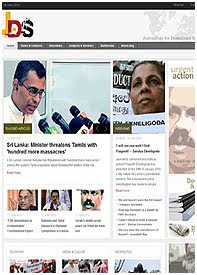

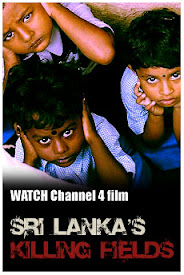







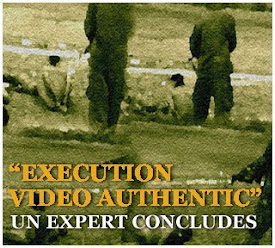



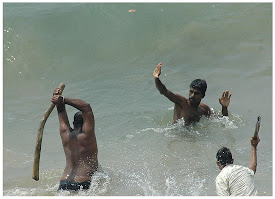
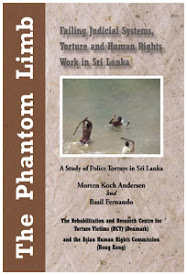
No comments:
Post a Comment